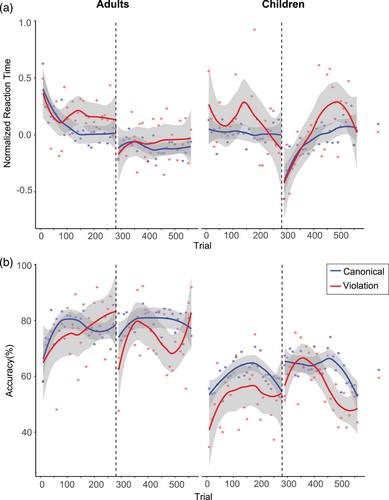Children extract a new linguistic rule more quickly than adults
Abstract
Children achieve better long-term language outcomes than adults. However, it remains unclear whether children actually learn language more quickly than adults during real-time exposure to input—indicative of true superior language learning abilities—or whether this advantage stems from other factors. To examine this issue, we compared the rate at which children (8–10 years) and adults extracted a novel, hidden linguistic rule, in which novel articles probabilistically predicted the animacy of associated nouns (e.g., “gi lion”). Participants categorized these two-word phrases according to a second, explicitly instructed rule over two sessions, separated by an overnight delay. Both children and adults successfully learned the hidden animacy rule through mere exposure to the phrases, showing slower response times and decreased accuracy to occasional phrases that violated the rule. Critically, sensitivity to the hidden rule emerged much more quickly in children than adults; children showed a processing cost for violation trials from very early on in learning, whereas adults did not show reliable sensitivity to the rule until the second session. Children also showed superior generalization of the hidden animacy rule when asked to classify nonword trials (e.g., “gi badupi”) according to the hidden animacy rule. Children and adults showed similar retention of the hidden rule over the delay period. These results provide insight into the nature of the critical period for language, suggesting that children have a true advantage over adults in the rate of implicit language learning. Relative to adults, children more rapidly extract hidden linguistic structures during real-time language exposure.
Research Highlights
- Children and adults both succeeded in implicitly learning a novel, uninstructed linguistic rule, based solely on exposure to input.
- Children learned the novel linguistic rules much more quickly than adults.
- Children showed better generalization performance than adults when asked to apply the novel rule to nonsense words without semantic content.
- Results provide insight into the nature of critical period effects in language, indicating that children have an advantage over adults in real-time language learning.


 求助内容:
求助内容: 应助结果提醒方式:
应助结果提醒方式:


